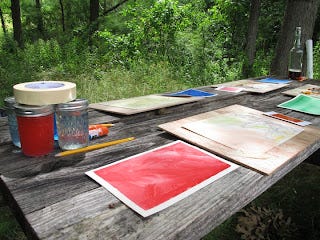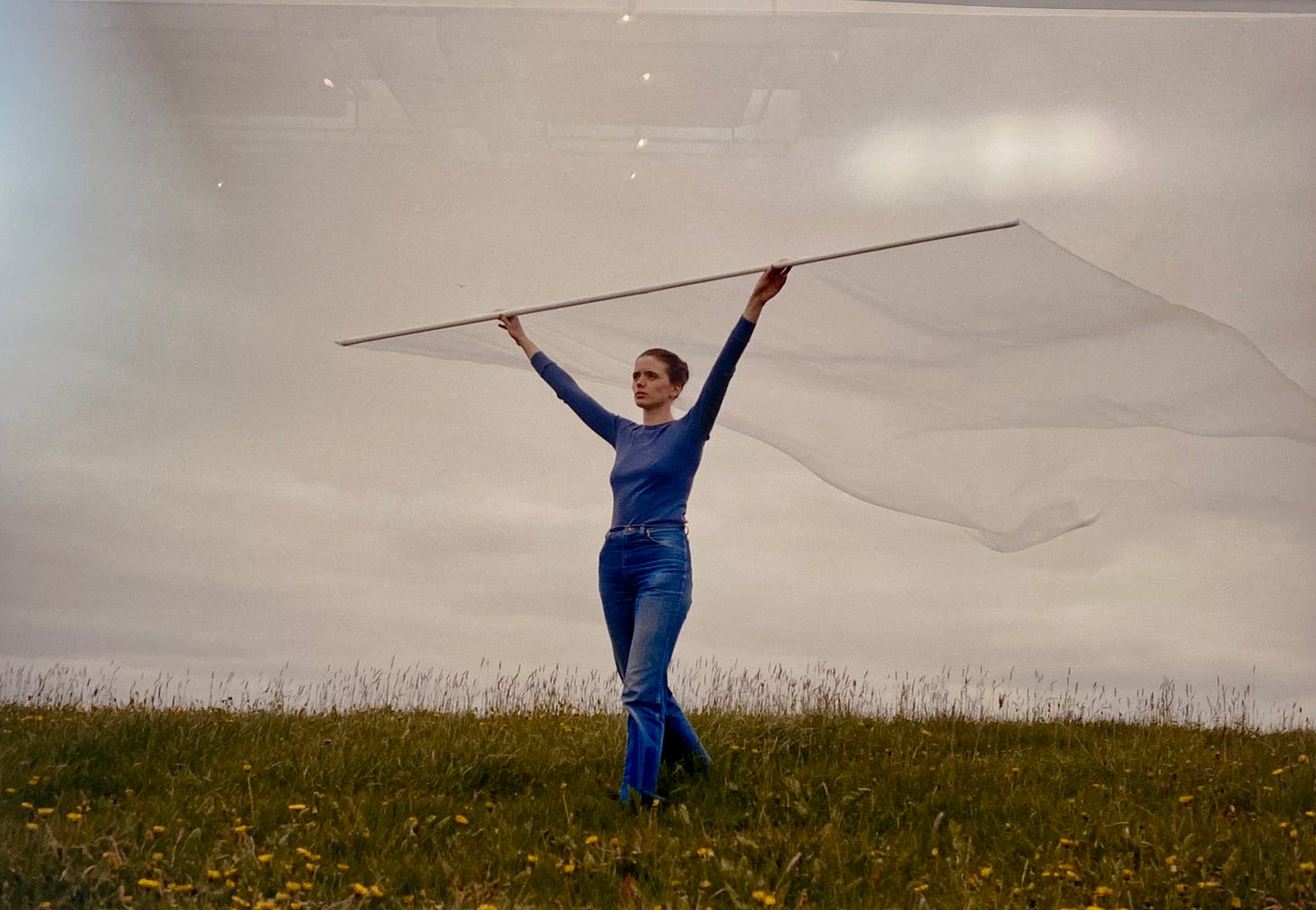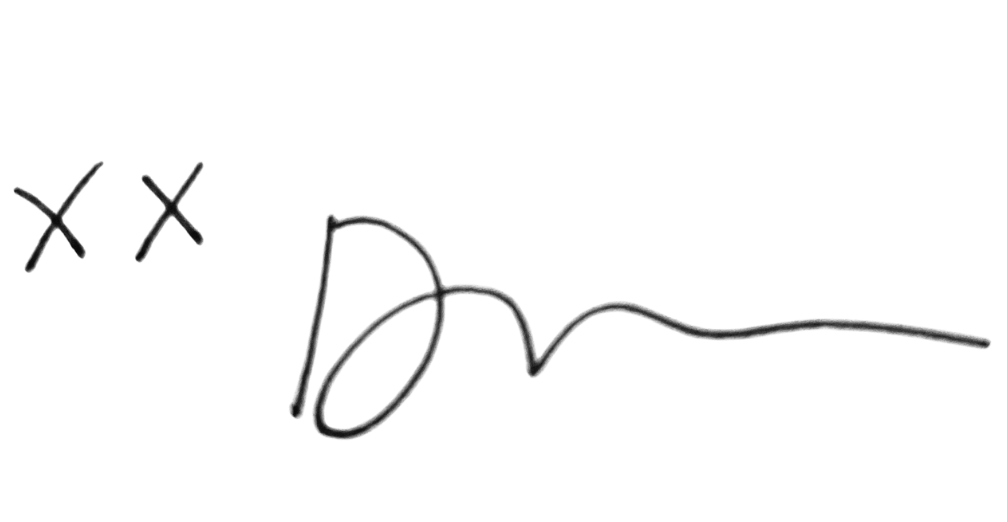Dear Starlight,
I'm back from Iceland
I missed home while I was away. I missed the river, the mountains, and the trees, all quivering with buds about to burst open. I missed being here.
When I went to Iceland for the first time in 2011 at an artist residency, I spent a month in one place: 100+ acres of open billowing field on the tip of the northern coast touching the crispy blue Arctic Ocean. There were no visible man-made interruptions other than the house and studio I was residing in. I had just completed a series of bright, large-scale mixed media abstract paintings and imagined I would continue in a similar direction when I arrived. Instead, I spent every day outside from 7:00am until late at night—there was no evening sky. You could say I was called outside.
It was the first place I truly began to listen to nature and feel an otherworldly connection. It’s where I learned the definition of “heartlisten.” My paintings became mud paintings—literally. My artworks were artifacts of an experience between myself, nature, and joy. I went outside not to “paint” but to listen. I hear swan song, god in the rocks, stars on the waves, and wind. This was a profound experience, and my previous artwork fell away like a crab shell.
When I came home, I became busy again with “work,” and the resonance between myself and nature became a luxury—maybe offered as a Sunday walk. I tried to apply the same process to place painting, and it worked. I connected with nature in those instances, but the encounters were squeezed between the insistent responsibilities of parenting and working.
The artwork felt intimate and ritualistic, and the objects became secondary to the wisdom I was hearing. Things didn’t make sense to me within the framework of “Art” and capitalism. My friend who worked at the Gagosian gallery told me my work was “too spiritual", too hippi”. I had no reference for any artistic lineage—I hadn’t studied art formally—so I was just a person heading into the woods with a bedsheet to mark shadows with my fingers and dirt. How do you justify that behavior and make time for it, especially when you have a hungry child and no financial support outside your paid laboring hours?
At the same time, in 2012, I authored Creativity + Courage, my signature curriculum of transformation born from grief, my studio practice, and walks in the woods. It is an experiential arts-based curriculum that leads participants into a recovery of their innate creativity and wisdom. This program was powerful and began to grow quickly across different audiences and applications.
In some ways, it scared me. I kept looking over my shoulder, wondering: What is this work? Am I allowed to teach this? What qualifies me? (I’ve since learned it was magic, but I haven’t figured out how to describe that an elegant artist statement yet, lol:)

I decided to pursue my MFA at Goddard College, to learn where I fit in the world of art and also to finally get a key to the gates of the land of “qualification”. There I experienced a significant growth spurt. My ideas, like a wild rambling rose, branched into multiple social ventures that demanded more than I could give, but I kept giving, leaving me under-resourced and burnt out. During the pandemic, I let go of Instar Lodge, and Creativity + Courage workshops while still directing Place Corps. Though the pandemic didn’t slow me down, it allowed space for reflection with fewer social interactions. I started prioritizing rest, going to bed earlier, and staying home more.
While I miss my artistic community of Instar Lodge and facilitating Creativity + Courage workshops, I’ve hesitated to return due to the fear of burnout. I’m still considering how I can right-size my offerings so they are regenerative—precious is the word. And, my relationship with nature has deepened into a daily practice of solitude—one I recognize as true love, one I don’t want to sacrifice.
There’s nothing I love more than visiting my spot at the river and watching, sensing, talking, and listening to all that surrounds me each day.
Did I already tell you what the woods told me a few weeks ago? As I walked by the scraggly black trees covered in brown vines and thorn bushes sprawling the ground, the woods said:
“We miss the people from before. They knew and loved us.”
Oh! My heart almost burst in sadness. I realized I walk past this little hill of woods every day, and yet I don’t know the trees by name. I don’t know what they do, what they like, or how they arrived here. They are neglected scenery as my busy mind pulls me ahead. I stood there feeling the loss of the people who once knew and loved these trees.
Why don’t I know them? Why do I live here and not know the local flora and fauna intimately?
The trees called to me.
I’ve decided to start learning about the plants I see every day on my walk. Some are already friends—like stinging nettle, just now sprouting its rippling baby leaves along the road’s edge.
The two new-to-me plants I’m starting with are the wild roses and the juniper trees. They line one side of the walk down to the river from my house. I noticed the wild rose sending strong shoots upward, then hooking itself around the gentle boughs of the Juniper. Her posture weighs down the tree’s limbs, and I’m not sure the Juniper has consented.
I love the wild rose. She is assertive, vehement, and also sweet and beautiful. The five-petal wild rose is often called “invasive,” despite being intentionally brought from Asia in the 1700s. She doesn’t seem to care much about others’ boundaries as she brazenly lays hers down. She is definitely invading the Juniper’s space.
But she has much to share—rose hips rich in vitamin C, flowers good for the skin, and a perfume that intoxicates. She’s always been a symbol of beauty, rebirth, and purity.
I’ve been thinking of clipping her back to set the Juniper free. Maybe she could be encouraged to fall forward instead of clinging onto others. (I’ll ask the Juniper first what they want.) Maybe all Rose needs is a little loving direction and connection to thrive without hurting the Juniper?
I haven’t spent much time learning about Juniper yet—but I was amazed to discover it’s a native, ancient North American species. Maybe it’s enjoying its prickly rendezvous with the newbie Rose? I don’t know yet.
Why do we feel the need to go on vacation to see beautiful scenery, when we could have our minds blown in our backyards by looking into the center of a magnolia bloom or studying an acorn? Why have we overlooked the value of knowing our places in an intimate way?
When I was in Iceland last week, it was a very different experience from the other two visits I’ve had at the artist residency. This trip was a whirlwind of sightseeing with my son and his friend. Waterfalls, waterfalls, waterfalls. Each day, we drove to a new location. I thought a lot about the difference between building a relationship with the nature of a place versus being a spectator of it. I watched people take photos of themselves in front of rocks as if the rock were a celebrity—someone admired but unknown. I thought about the phrase “take pictures,” and the word take. For the first time, I felt how photo-snapping could be extractive, lacking gratitude. I thought of the Hopi, who don’t allow their photos to be taken because they believe it steals a part of them; they are sacred and not an exhibit. I think the land and the animals are sacred too.
I visited local art museums and was struck by how the landscape had shaped the artists’ work—in form, material, and subject. Many paintings were dark moody blue and purple landscapes, as much of the year the land is covered in a night sky. My favorite image was of a woman holding a translucent piece of fabric over her head like a cape in the middle of a field. Bending close to read the title, I read Breeze. What I noticed at the exhibit is that an artist might be wrestling with a universal question, but they are answering it through the matter of that particular place. I think this matters.

As I stretch and crawl and grow into my middle-aged self, I’ve been wondering, “What’s next?” My mind is a bit like that wild rose bramble, reaching upward, trying to grow taller still. There is a tension between legacy and liberation. I’ve been laying out my history, looking at past achievements, and wondering: Am I repackaging them into a new, streamlined adventure, ready to climb a mountain? Or will I leave them behind—just taking my notebook and a bedsheet to the river or woods? What do we owe to our past selves, and what can be released as we move ahead?
When I was boarding the flight to Iceland the attendant looked at my passport and said he loved my name, that it was a “picture name”. Since then I’ve started to think about my name, that it holds a picture of my artistic to-do’s. As I go forward I think the important thing to know is whether I am carrying my essence forward or carrying my baggage.
PS. While looking for an old photo I came across this blogpost I wrote in 2018, called: No Such Thing As Art. Reading it is interesting as I am still polishing the same stone koan. I also revisited some of this ancient blog of art beginnings from as far as almost twenty years ago—which still feels like yesterday that I walked tentatively through that door that said: “Artist” on it.








I have always loved Dawn Breeze, as you know❤️. I was on a journey as I read this. A journey of your history and me knowing you and many of those moments. I haven’t yet been out in nature painting this year, but feel the urge after reading this. I have been bringing backyard sprouts, buds and branches indoors to paint. I too hear this flora talk to me as my eyes study and paint. I feel an alchemy that I never want to overly describe because it’s sacred but it comes out in my art. I think this is similar to “heart listen”. Now that the temperature is warmer I’m back into my ritual of sitting on my back porch in the morning and listening to the chorus of birds. My life is slower now as I am a bit over a century in my human years, I have a consciousness of my connection to Earth, Nature and Cosmos and the energetic flow which is what others call God. The microcosm of all that is is in my backyard. It brings feelings of so much gratitude.
Thanks for this lovely essay!
❤️